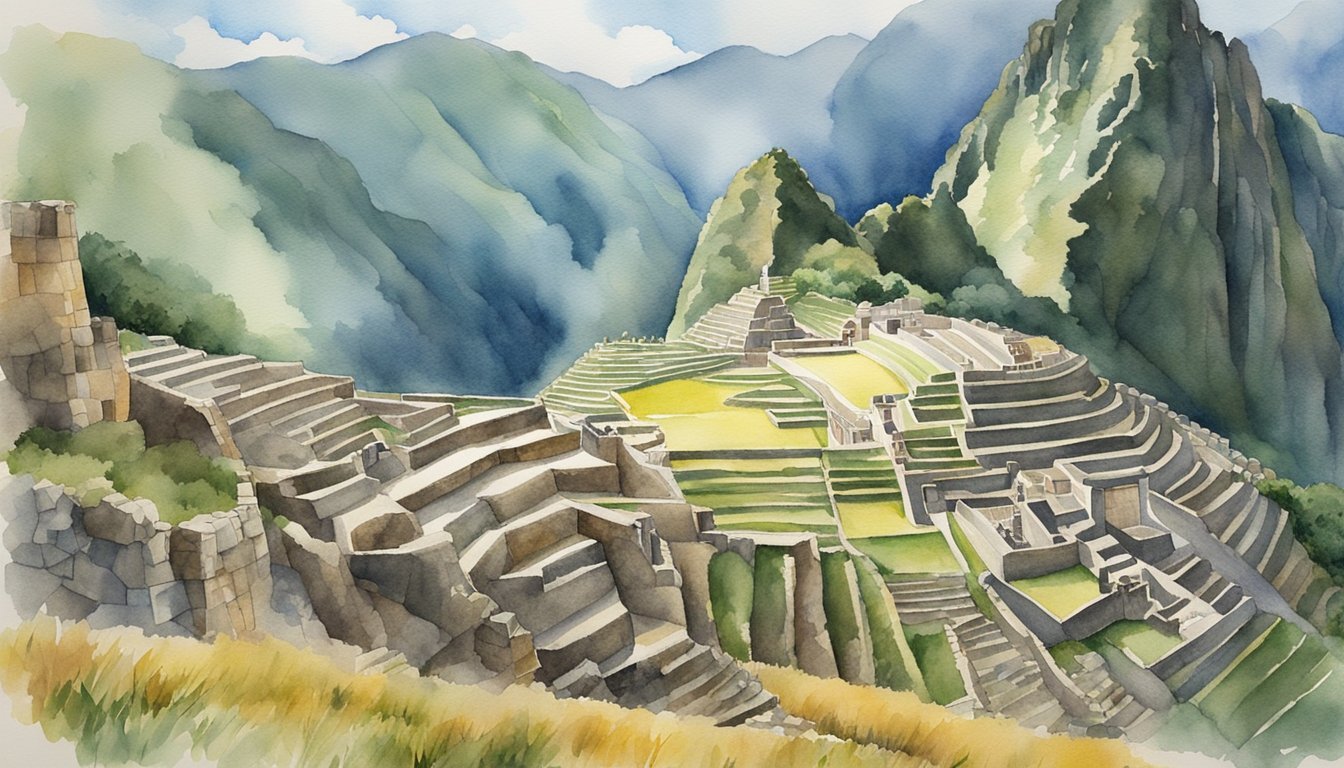Inca Empire: Foundation and Expansion

Origins and Legendary Beginnings
The Inca civilization originated in the early 13th century in the Peruvian highlands, an area known today as Peru [^1^]. According to legend, the first Inca king, Manco Capac, established the kingdom of Cusco after being led to the area by the sun god Inti [^2^]. Over the centuries, the Inca civilization grew to develop a vast empire, known in the Quechua language as Tawantinsuyu or the “Realm of the Four Parts” [^3^].
Political Structure and Governance
At the head of the Inca Empire was an all-powerful ruler known as the Sapa Inca, who was considered to be divine as a descendant of the sun god Inti [^4^]. The Sapa Inca, such as Pachacuti Inca Yupanqui and his successors, Topa Inca Yupanqui and Huayna Capac, managed an extensive political and administrative system with a hierarchical structure [^5^]. The empire was divided into four main provinces, each governed by a high-ranking Inca from Cusco, the empire’s capital city [^6^].
Conquest and Territorial Growth
The Inca Empire expanded through a combination of military conquests and strategic alliances with neighboring states. One notable leader, Pachacuti Inca Yupanqui, transformed the Inca civilization into an empire by conquering a significant portion of the Andean region and extending the empire’s borders as far as Ecuador and Chile [^7^]. The empire continued to grow under his successors, Topa Inca Yupanqui, and Huayna Capac, eventually becoming the largest in pre-Columbian America and stretching from Quito in present-day Ecuador to Santiago in modern-day Chile [^8^]. The Inca conquests ensured the incorporation of diverse peoples and cultures within the empire, making it an extraordinary civilization in terms of its scale and diversity [^9^].
Culture, Religion, and Society
Language, Education, and Communication
The Inca civilization, which flourished in the Andean regions of South America, had a unique form of communication: the Quipu. Quipus were a system of knots and strings used for record-keeping and were essential to the administration of the vast empire. While the Inca language, called Quechua, was spoken throughout the region, writing was not prevalent. However, oral tradition played a critical role in Inca education and the transmission of culture.
Religious Beliefs and Practices
The Inca religion was a complex mix of animistic beliefs, ceremonies, the worship of nature, and belief in objects with magical powers. The main focus of Inca religious practices was the worship of the sun, presided over by the Inca priests. The highest-ranking deity in the Inca pantheon was the Creator God, Viracocha, who was believed to have created the world and its inhabitants. The sun god, Inti, was considered the most important of the gods and played a significant role in the spiritual lives of the people.
Temples were built in significant locations throughout the empire, with the most important temple, the Temple of the Sun, located in Cusco. Other religious sites included Machu Picchu and sacred Lake Titicaca, believed to be the birthplace of the original Incas.
Social Hierarchy and Daily Life
Inca society was hierarchical, with the Sapa Inca (emperor) at the top, followed by nobles, administrators, and commoners. The vast majority of the population were farmers, who cultivated crops such as corn and potatoes on terraced fields. Agriculture played a central role in the Inca economy, with farming techniques adapted for the challenging Andean environment.
Throughout the empire, Inca communities were organized in a system called Ayllus, which consisted of groups of families working together on shared tasks. Textiles were an important aspect of daily life and trade, produced in various materials such as cotton and alpaca wool. The Inca civilization was also known for its intricate metalwork with gold and silver used for ceremonial purposes.
Science, Agriculture, and Engineering
The Incas were accomplished engineers and agriculturalists, leaving an impressive legacy in the form of roads, bridges, and agricultural terraces. The Inca road network stretched over 25,000 miles, connecting the vast empire from Quito in the north to Santiago in the south. This network allowed for efficient trade, communication, and the spread of cultural ideas.
Inca architectural design, exemplified by the famous city of Machu Picchu, represented a synergy between the environment and human ingenuity. They also built impressive agricultural terraces to optimize cultivation and irrigation systems, enabling farming to thrive in the harsh Andean environment.
The Incas had a keen understanding of astronomy, which informed their agricultural practices and religious beliefs. They used this knowledge to create an agricultural calendar, which guided planting and harvesting activities, as well as religious ceremonies related to the sun and other celestial bodies.

